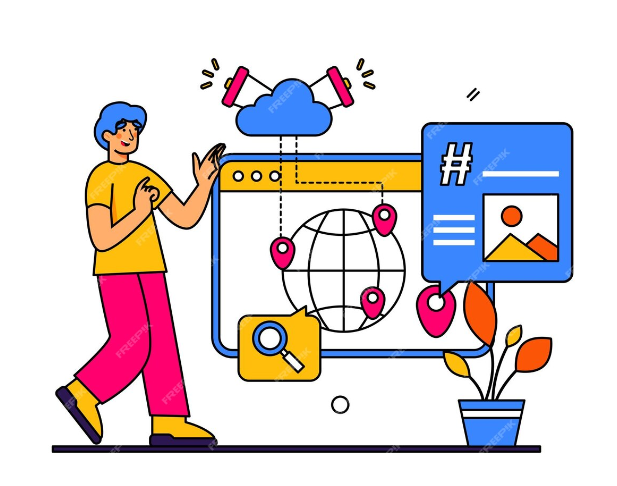How To Blend Organic And Paid Media Strategies on LinkedIn


As the Associate Director of Paid Media & Performance Marketing at National University, my role constantly involves finding innovative ways to engage with our audience in a fiercely competitive higher education landscape. In an era where flexibility and choice define the student experience, leveraging both organic and paid content on LinkedIn can provide a significant advantage. Here’s how blending these two strategies can create a powerful synergy to elevate your marketing efforts.
Understanding the Basics
Before diving into how to blend organic and paid content effectively, let’s clarify what each term means. Organic content refers to the posts and updates you share on LinkedIn without paying for placement. This includes articles, updates, and other forms of content that build relationships and engagement over time. Paid media, on the other hand, involves investing in advertisements to boost your visibility and reach specific segments of your target audience.
Organic content is the cornerstone of your LinkedIn strategy. It’s essential for building trust and establishing your brand’s presence. Start by creating and sharing high-quality, valuable content that addresses the interests and needs of your audience. For example, share thought leadership articles, industry insights, and success stories from current and former students. This not only showcases your expertise but also helps in positioning your institution as a leader in the field.
Ensure that your LinkedIn profile reflects this commitment to value. A professional profile photo, a compelling headline, and a well-crafted summary should all convey your skills, experience, and passion. Engaging with your audience through comments, direct messages, and group discussions further strengthens your organic reach and fosters a sense of community.
While organic content builds relationships, paid media is crucial for expanding your reach. LinkedIn offers various ad formats, including sponsored content, text ads, and InMail messages, each designed to capture attention and drive action. The key is to ensure that your paid content aligns with your organic messaging to create a seamless user experience.
For instance, if you’ve shared a successful case study about a student on your LinkedIn page, consider promoting this content through LinkedIn’s sponsored content feature. This can help you reach a broader audience who might not have seen the post organically. Similarly, use LinkedIn’s targeting options to reach specific demographics, such as prospective students or industry professionals, with tailored messages that complement your organic content.
To maximise the effectiveness of both organic and paid media, it’s essential to integrate these strategies rather than treating them as separate entities. Here are some best practices to harmonise your approach:
1. Align Content with Audience Journey: Understanding where potential students are in their decision-making process can help you tailor your content effectively. For example, if a prospective student is in the awareness stage, organic content such as informative blog posts or success stories can build initial interest. At the same time, paid media can drive traffic to these posts or promote upcoming events, helping to move prospects further down the funnel.
2. Utilise Cross-Channel Insights: Use data from both organic and paid efforts to gain insights into what resonates with your audience. For example, if a particular type of organic post performs well, use this insight to inform your paid ad strategy. Similarly, analyse how your paid campaigns impact engagement with your organic content. This cross-channel understanding can help you optimise both strategies for better results.
3. Foster a Unified Team Approach: To achieve the best results, ensure that your organic and paid media teams work closely together. Share data and insights freely to understand how each strategy impacts your overall objectives. For instance, if a paid campaign leads to increased engagement on your organic posts, this synergy can enhance your overall marketing effectiveness.
After integrating your organic and paid strategies, it’s crucial to measure their combined impact on your key performance indicators (KPIs). Track metrics such as engagement rates, lead scores, and conversion rates to evaluate the success of your approach. Use this data to refine your strategies and make informed decisions.
For instance, LinkedIn research shows that combining organic and paid strategies can lead to a 61% higher likelihood of conversion and a 14% potential lift in performance compared to using paid media alone. These insights highlight the importance of a balanced approach that leverages the strengths of both strategies.
Ultimately, the goal of blending organic and paid content is to create meaningful connections with your audience. By sharing valuable content and engaging with prospects in a genuine way, you can build trust and foster relationships that lead to successful outcomes. This approach not only enhances your visibility but also helps establish your institution as a trusted partner in students' educational journeys.
In conclusion, the synergy between organic and paid content on LinkedIn offers a powerful way to engage and convert your target audience. By aligning your content with the audience’s journey, leveraging cross-channel insights, and fostering a unified team approach, you can create a cohesive strategy that drives results. This blend of strategies not only amplifies your reach but also ensures that you connect with prospective students on a deeper level, making your institution stand out in a crowded marketplace.
Leave a Reply